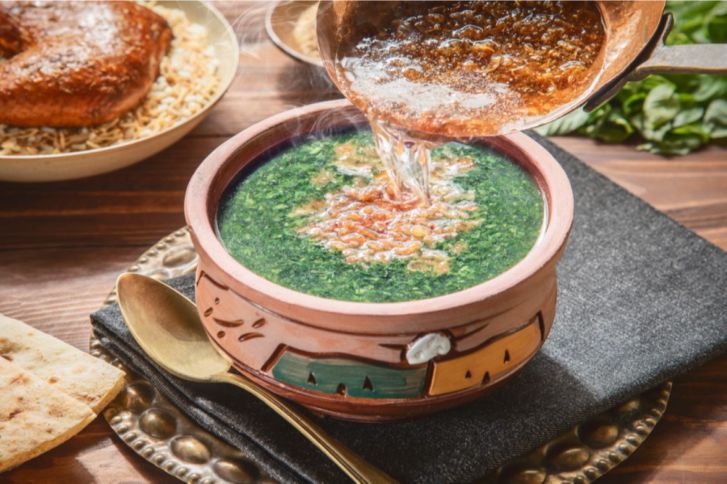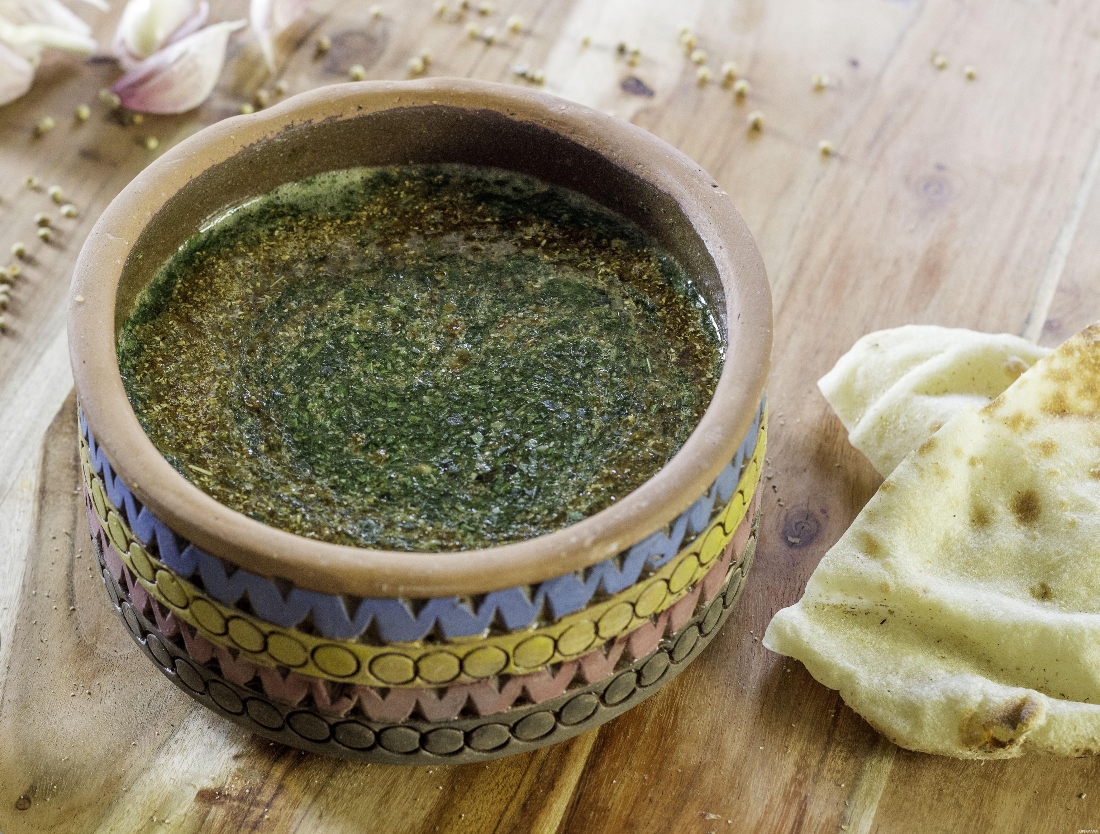Whether it is prepared as a soup, mixed with rice or ‘aish baladi, with chicken or duck on the side or on top, or even with rabbit, molokhiya is one of the most popular Egyptian dishes. A staple in every Egyptian household’s lunch meal, and a flavorful addition to any ‘ozouma (Egyptian dinner party), molokhiya adds a touch of Egypt to every meal.
To prepare this delicious authentic dish, the recipe includes more than just ingredients and spices — it includes the famous shah’a.
What is shah’a?
Shah’a (gasp) is considered by most Egyptian women to be the most important step during the preparation of molokhiya, maybe more important than the ingredients themselves.
While preparing molokhiya, the greens are placed into a pot of boiling broth, where they are meant to dissolve. Once the mixture is melted, it is stirred slowly and left to simmer for a few minutes. Then, the heat is turned off before it reaches a boiling point. In a different pan, vegetable oil or ghee is heated and then crushed garlic cloves and dried coriander are added and stirred until their color becomes golden brown. Before these cloves burn, they are dropped from the pan onto the molokhiya pot. Here, with the sizzle that comes with the hot fat’s contact with the green soup, the chef is supposed to gasp aloud. The mixture is then stirred a few last times and the molokhiya is ready to be served.

Origins of the shah’a
There are multiple legends on the origins of the age-old cooking ritual, believed to make the dish tastier.
The first legend narrates that Al Muizz l’Din Allah (the Fatimid caliph who conquered Cairo in AD 969), used to love molokhiya, and would order the killing of his cook if the dish was not ready on time. One day, while the cook was about to add the garlic cloves to the molokhiya mix, he gasped out of fear from the caliph because he was late. In another legend, the same leader loved molokhiya so much until he dropped the hot meal on himself one day, and gasped aloud.
Another legend — perhaps the most logical one — tells the story of a young girl unskilled at cooking: she gasped while preparing molokhiya because she feared the pot would fall from her. When the visitors tried the meal, they were impressed and asked her what she did differently. She replied: “shaha’t” (I gasped).
The molokhiya shah’a is only one of many cooking traditions that Egyptians have followed for years, many of which have unknown origins. Much like the rest of Egyptian tradition, Egyptian cuisine has an abundance of stories and legends that are passed down from one generation onto the next.
Subscribe to the Egyptian Streets’ weekly newsletter! Catch up on the latest news, arts & culture headlines, exclusive features and more stories that matter, delivered straight to your inbox by clicking here.






Comment (1)
[…] لماذا حبس المصريون أنفاسهم وهم يصنعون مولوكيا؟ […]